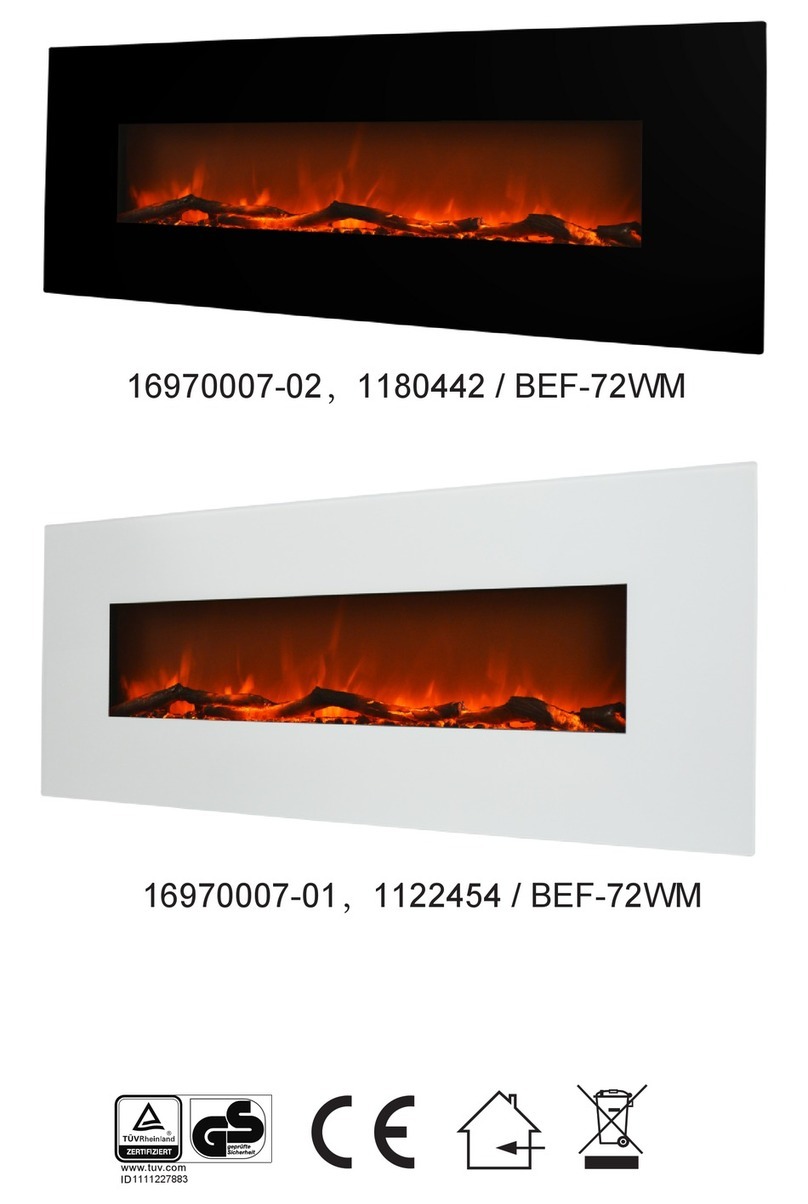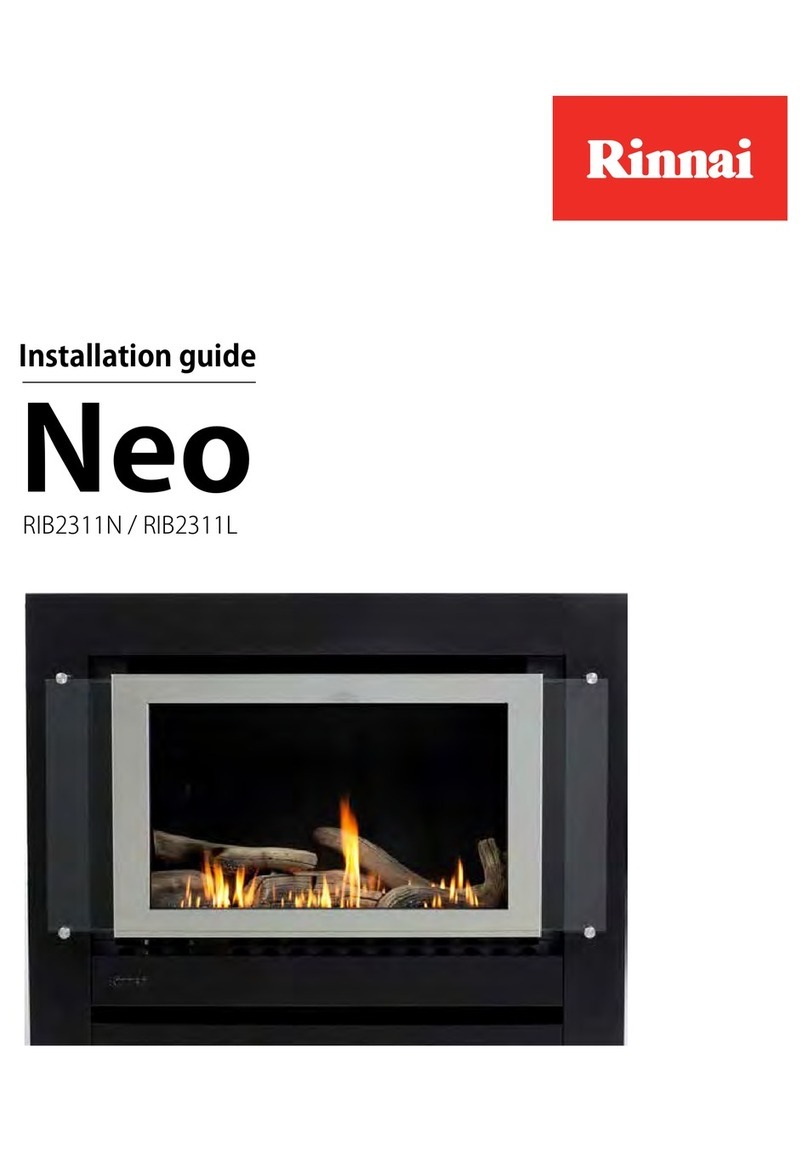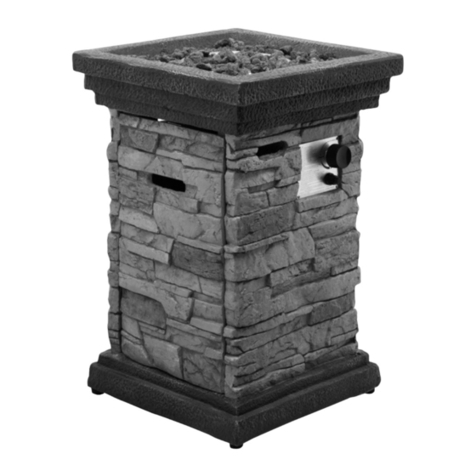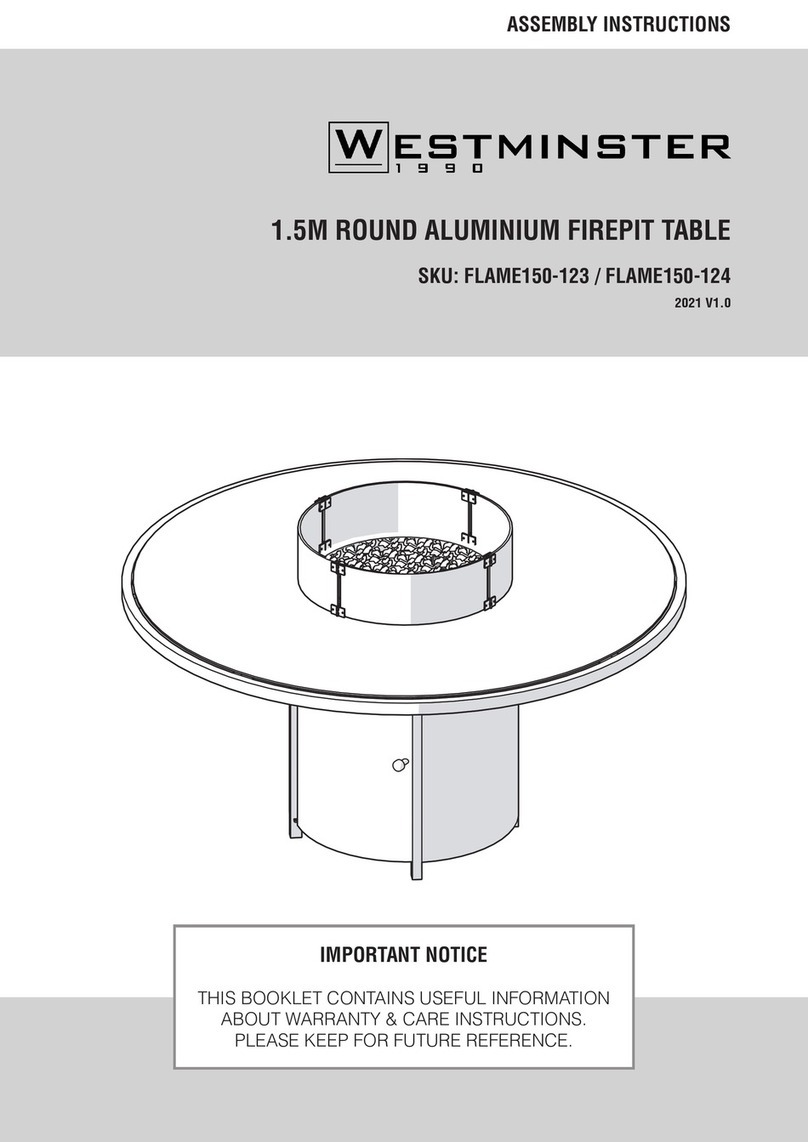CJs Home Decor Amargosa User manual

&
HOME DECOR FIREPLACES
&
HOME DECOR FIREPLACES
©
21701 Route 6, Warren, PA 16365
info@cjshomedecor.com • 1-888-986-1535
Zero Clearance Fireplace Doors
AMARGOSA & PELHEM
OWNER’S
MANUAL
WWW.CJSHOMEDECOR.COM
WWW.CJSFIREPLACES.COM
WWW.FIREPLACEDOORSONLINE.COM
TM TM

IMPORTANT
! !
READ ALL INSTRUCTIONS BEFORE BEGINNING YOUR FIREPLACE DOOR
INSTALLATION. FAILURE TO FOLLOW INSTRUCTIONS AS DETAILED
WILL VOID YOUR WARRANTY AND MIGHT RESULT IN A FIRE HAZARD.
PLEASE FOLLOW THE GUIDELINES BELOW FOR THE SAFE USE AND
CARE OF YOUR FIREPLACE:
ŸAlways use a grate for fires.
ŸMake sure the front of the grate is at least six inches (6”) back
from the door.
ŸKeep combustibles away from the front of the door.
ŸDo not clean glass doors while they are hot.
ŸWhen burning fire, the doors and the chimney damper must be
fully open and the mesh curtain fully closed.
ŸInstall and use only after consulting with local building and fire
regulations, and in accordance with the installation and
operating instructions provided.
ŸInspect and clean chimney regularly.
1

ONE YEAR LIMITED WARRANTY
This product is warranted by the manufacturer to the original retail buyer for one (1) year from date of purchase against
defects in materials and workmanship. This includes any implied warranties of merchantability and fitness for a particular
purpose which are also limited in duration to one (1) year from the original purchase of this product.
This warranty covers only parts, and applies only to products purchased for consumer use. This warranty does not apply to
color changes in the finish resulting from contact with flames or burning embers and does not cover damages which occur
in transit or result from alteration, accident, misuse, abuse, acid hearth or improper installation. The manufacturer shall not
be liable for consequential or indirect damages which are caused by defects in its repair and replacement.
If this product does not conform to this warranty contact your dealer. Proof of the original purchase will be required.
This warranty give you specific legal rights and you may have other rights which vary from state to state.
REFERENCE INFORMATION
We recommend that you staple your receipt to this page,
and keep these instructions in a safe place.
fill out the fields below for your
future reference,
Purchase date:
Model purchased:
Amargosa Pelhem
It is installed on a prefabricated fireplace made by:
Model #
The opening dimensions of your prefabricated fireplace:
Width
Height
The outside finished dimensions of you purchased fireplace door:
Width
Height
Your notes & remarks:
If you have questions or comments about this document, please contact:
CJ’s Home Decor & Fireplaces
21701 Route 6
Warren, PA 16365
Call toll-free 1-888-986-1535 or email info@cjshomedecor.com 2

CARE & MAINTENANCE
ACID HEARTH: Newly constructed fireplaces are cleaned with acid to remove extra mortar. Unless removed,
the acid will crystallize in the brick pores and emit gas which may damage the finish on the fireplace
fixtures or other nearby metal objects. “Acid Hearth” damages brass, steel, and iron. This condition can
persist for a year or longer unless corrected. Consult your mason for more information.
FIXTURES DAMAGED BY “ACID HEARTH” ARE NOT CONSIDERED MANUFACTURING
DEFECTS AND THEREFORE WILL VOID WARRANTY!
The following suggestion, while not a guaranteed remedy, may aid in correcting “Acid Hearth:”
1. Saturate the hearth area with a solution of household ammonia or hearth cleaner. Use care to avoid
contact with adjacent carpet, floor, etc.
2. Rinse thoroughly with warm water or hot water.
3.Rinse several times with cool water to remove all ammonia.
4.Allow hearth area to dry and seal with a hearth sealer.
ASH DISPOSAL: Ashes should be placed in a metal container with a tight-fitting lid. The closed container of
ashes should be placed on a non-combustible floor or on the ground, well away from all combustible
materials, pending final disposal. If the ashes are disposed of by burial in soil or otherwise locally
dispersed, they should be retained in the closed container until all cinders have thoroughly cooled.
CREOSOTE-FORMATION & NEED FOR REMOVAL: When wood is burned slowly, it produces tar and other
organic vapors which combine with expelled moisture to form creosote. The creosote vapors condense in
the relatively cool chimney flue of a slow burning fire. As a result, creosote residue accumulates on the flue
lining. When ignited, this creosote makes an extremely hot fire. The chimney connector and chimney
should be inspected at least twice monthly during the heating season to determine if a creosote buildup
has occurred. If creosote has accumulated, it should be removed to reduce the risk of a chimney fire.
MAINTENANCE: Your glass enclosure is built to require very little maintenance. It is suggested, however, that
you perform the following procedures as required to maintain the original attractive appearance of the
glass enclosure.
• Care of Glass: The glass in the doors has been specifically treated for use with fireplaces. This glass is eight
times stronger than conventional plate glass, but it is possible to break the glass through abuse by
overheating it, or by blocking any of the air intakes The glass can be cleaned when completely cooled with
most household cleaners.
• Care of Frame: Your enclosure is covered with a durable anodized finish to prevent peeling, chipping and
scratching. DO NOT POLISH THE FINISH. When cleaning is required, use a mild liquid detergent and a soft
cloth. DO NOT USE an acid base or abrasive cleaner.
• Replacement Parts: Use only specified replacement parts available from your dealer. Do not use substitute
parts.
3

PARTS LIST
Door frame
X1
Door set
X1
#8 x 2” SMS R-Bow
(Part # 42-60145)
X5
4
TOOLS NEEDED
Power drill
3/32” Drill bit
Bubble level
#8 Phillips
Screwdriver
1/4” Nut driver
Scratch awl
3/16” Drill bit

STANDARD MOUNTING
1.) Remove all items from the box, making sure to leave enough space to work comfortably.
NOTE: There is a protective film on the door. This is used to prevent scratching. DO NOT peel off at this time.
2.) Some fireboxes have a rail for a mesh screen, and/or screen
retaining clips, and it may be necessary to remove them.
3.) Place the door frame into the opening of the firebox,
finished side facing you, and align in the position
where it is to be installed. Make sure that once it is in
place that it is level and plumb. We recommend that
you use a level to do this.
4.) There are five pre-drilled holes in the door frame: one in the middle of the
top bar, and two on each upright. Using a scratch awl, mark the hole
locations on the firebox.
5.) Remove the door from the opening. While
using a 3/32” drill bit, drill the firebox where
you have marked the holes.
6.) Carefully remove the protective film from the door frame.
7.) Place the door back into the firebox opening and align the holes on the
door frame with the ones you drilled.
8.) Use the #8 X 2” screws, and fasten the door to the firebox.
9.) Peel off any remaining protective film, and make sure you have removed all packing materials.
Remove
screen rail
Wrong Right
1
2
3
4
5
5

OPTIONAL MOUNTING
1.) Remove all items from the box, making sure to leave enough space to work comfortably.
NOTE: There is a protective film on the door. This is used to prevent scratching.
DO NOT peel off at this time.
) Place the door frame into the opening of the firebox,
finished side facing you, and align in the position
where it is to be installed. Make sure that once it is in
place that it is level and plumb. We recommend that
you use a level to do this.
5.) There are five pre-drilled holes in the door frame: one in the middle of the
top bar, and two on each upright. Using a scratch awl, mark the hole
locations on the firebox.
6.) Remove the door from the opening. While
using a 3/16” drill bit, drill holes #1 through #4.
Using a 3/32” drill bit, drill hole #5.
7.) Carefully remove the protective film from the door frame.
8.) Place the door back into the firebox opening and align the
holes on the door frame and the brackets with the ones you
drilled.
9.) Use the 4 “Hex screws” for the left and right upright holes,
and one of the “#8 screws” for the hole in the top bar, and
fasten the door to the firebox.
10.) Peel off any remaining protective film, and make sure you
have removed all packing materials.
1
2
3
4
5
Wrong Right
6

ADJUSTMENT INFORMATION
ADJUSTING THE DOOR-SET:
Sometimes due to vibrations during transportation, or as a result of handling, the doors may come out of
adjustment. Follow these steps to adjust your door-set.
1.) Make sure that the frame is plum in the fireplace.
2.) Look at the trim around the glass. This is most likely the place where an
adjustment may be needed. The glass may have shifted causing a gap
between the end of the glass and the end caps, or it may have
moved from side to side.
3.) Using a rubber mallet, gently tap the end caps until they are
against the glass, or tap the glass until it is centered with the cap.
NOTE: DO NOT USE A METAL-FACED HAMMER OR ANY HARD OBJECT -- IT MAY CAUSE YOU TO
INADVERTENTLY DENT OR DING THE CAPS, OR CHIP THE GLASS!
You should try to get a 1/8” gap between the two center pieces
and a 1/16” gap (or less) between the two outer panels of glass on
each half of the door set.
4.) If the door set still needs alignment, loosen the hinge screw
where the door attaches to the frame, adjust the door-set
left/right and front/back as required, then tighten screws
firmly.
REMOVING THE DOOR-SET:
If for some reason you need to remove the
door-set, it is recommended that you call your
installer. If this is not possible, please follow these procedures.
1.) Open the door-set to the full fold position (all the way open, and folded against
the frame).
2.) Remove the two screws in the lower hinge.
3.) Remove the two screws in the top hinge.
4.) Lean the door-set forward to remove.
5.) Repeat for the other side.
ADJUSTING THE DOOR FRAME:
There are four AMS corner brackets on the back of the frame. These have been factory
tightened. It is possible that they may have loosened during transportation and create
a separation at the miter. To adjust, use a 1/4” flat head screwdriver, and loosen the two
screws in the AMS bracket. Align the miter firmly and re-tighten the screws. Repeat for
other corners if necessary.
Hinge
Back of glass
1/16”
Frame
3/16”-1/4” 1/8”
Magnets
Adjustment screws
(Top & Bottom)
12
34
7
Front
Back

If you own a fireplace, then you need
Fireplace Doors Online! With the
largest selection of stock and custom
doors of every size and style from
industry-leading manufacturers, you’ll
find what you need at the best prices
available!
www.fireplacedoorsonline.com
FIREPLACES
www.cjsfireplaces.com
Wood, electric, gas, gel fuel, we have it
all! With a near-infinite number of styles
and sizes to choose from at CJ’s, you’ll
always find the right one for your home!
Already have one? We also carry the
tools and accessories needed to
maintain your fireplace’s safe operation.
©
&
HOME DECOR FIREPLACES
21701 Route 6
Warren, PA 16365
info@cjshomedecor.com
1-888-986-1535
www.starbrickstoves.com
Starbrick Stoves is your one stop for
freestanding stoves, hearth pads, and
coal water boilers!
We also sell the parts, tools, and
accessories you need to keep your
stove running safely and efficiently!
www.veneerstoneonline.com
Stone isn’t just for fireplaces! Our
large selection of veneer stone can
be used for siding, pavers, garden
walls -- whatever you can imagine!
Let CJ’s be the foundation for your
home improvement project!
Follow us for discounts and great deals!Follow us for discounts and great deals!
www.facebook.com/CJsHomeDecorAndFireplaceswww.facebook.com/CJsHomeDecorAndFireplaces
www.cjshomedecor.blogspot.comwww.cjshomedecor.blogspot.com
www.houzz.com/pro/cjshomedecorwww.houzz.com/pro/cjshomedecor
www.twitter.com/cjshomedecorwww.twitter.com/cjshomedecor

Whether you’re looking to decorate or entertain,
Fireside Expressions has the things you need to turn
your backyard into your own private paradise!
From our classic pool scuppers, innovative fire glass,
and awe-inspiring fire-on-water kits, your backyard
Coming soon:
LavaHeat™ products!
www.firesidexpressions.com
HOME DECOR
www.cjshomedecor.com
©
&
HOME DECOR FIREPLACES
21701 Route 6
Warren, PA 16365
info@cjshomedecor.com
1-888-986-1535
See more fire glass colors
at firesidexpressions.com!
Sometimes it’s the little touches that bring out the best
in your decor.
CJ’s Home Decor offers quality accents for your home
and garden. From beautiful custom wrought iron
doors, decorative (yet functional) rain barrels, a full line
of soapstone products and so much more, let us help
you to turn your house into the ultimate home!
Follow us for discounts and great deals!Follow us for discounts and great deals!
www.facebook.com/CJsHomeDecorAndFireplaceswww.facebook.com/CJsHomeDecorAndFireplaces
www.cjshomedecor.blogspot.comwww.cjshomedecor.blogspot.com
www.houzz.com/pro/cjshomedecorwww.houzz.com/pro/cjshomedecor
www.twitter.com/cjshomedecorwww.twitter.com/cjshomedecor
This manual suits for next models
1
Table of contents
Popular Indoor Fireplace manuals by other brands

decoflame
decoflame World Series User manual & installation guide

Heatiator
Heatiator CONSTITUTION C40 owner's manual
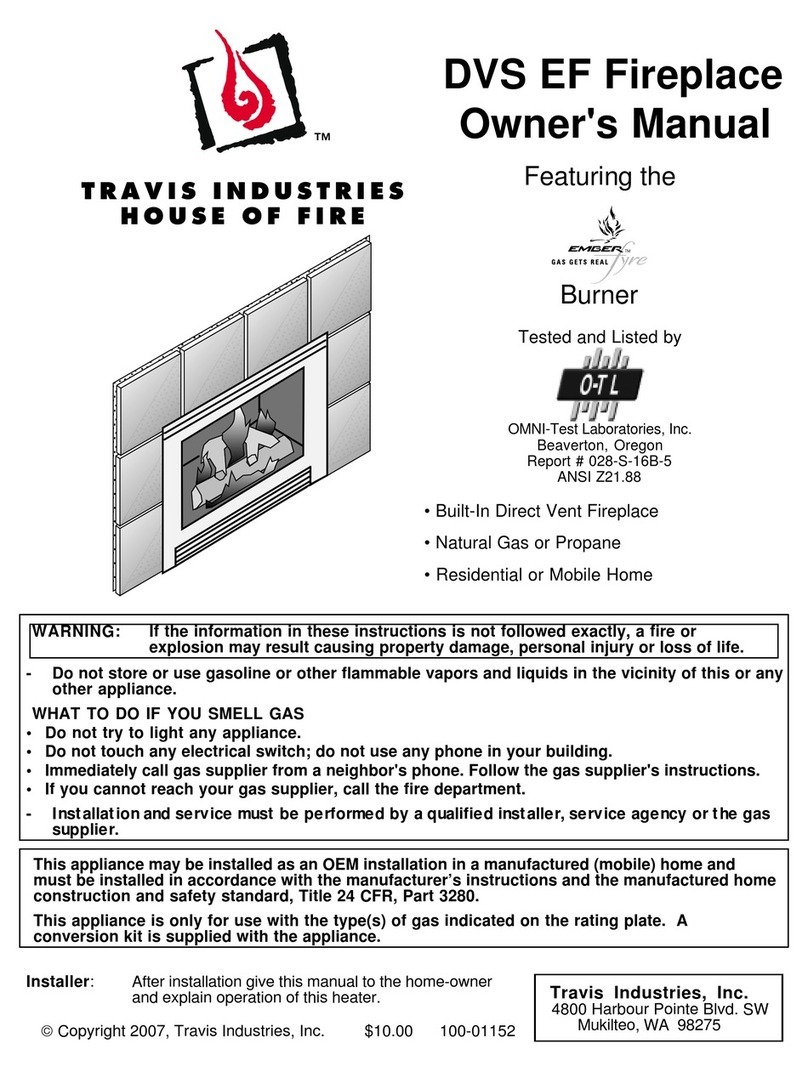
Travis Industries
Travis Industries DVS EF Fireplace owner's manual
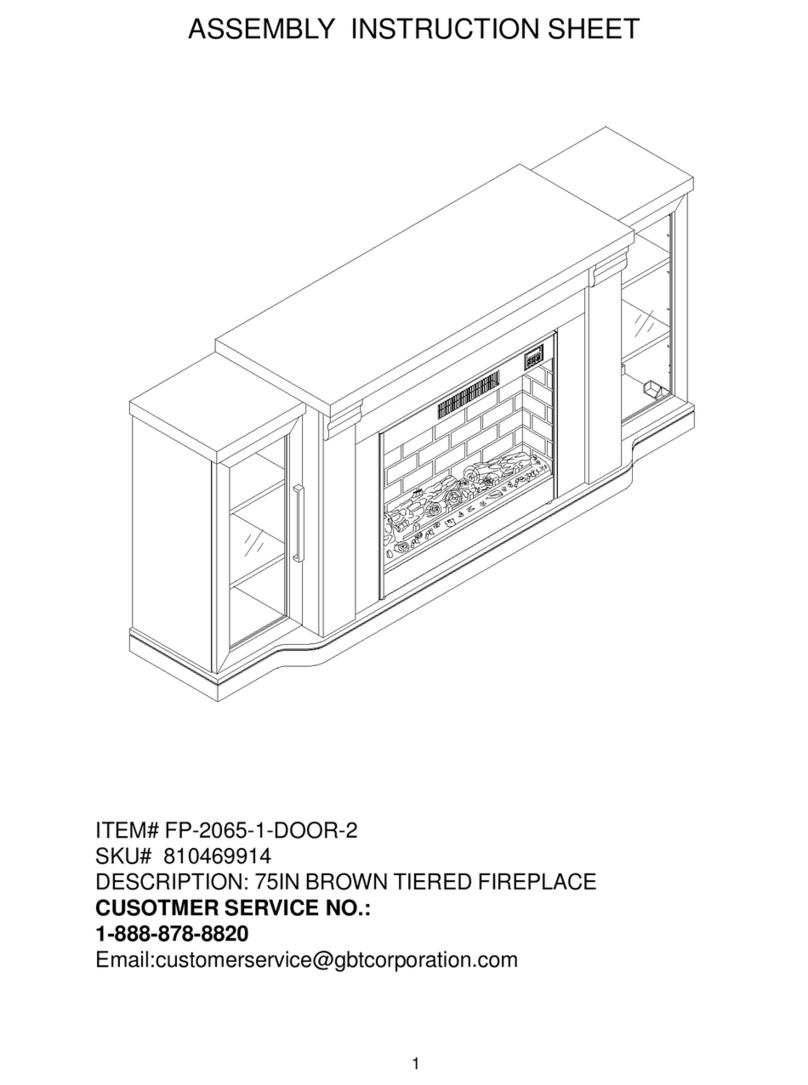
GBT
GBT FP-2065-1-DOOR-2 Assembly instruction sheet

Dimplex
Dimplex DF2550-EU owner's manual

Riello
Riello RS/M Series Installation, use and maintenance instructions
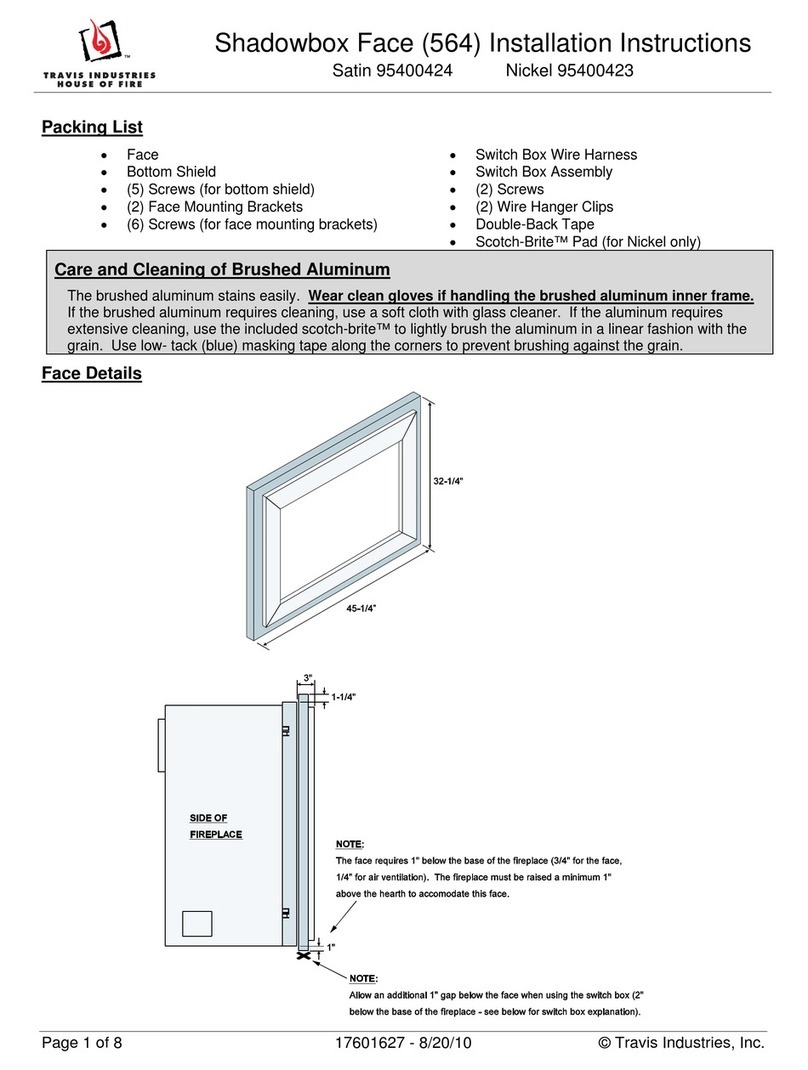
Travis Industries
Travis Industries 564 installation instructions
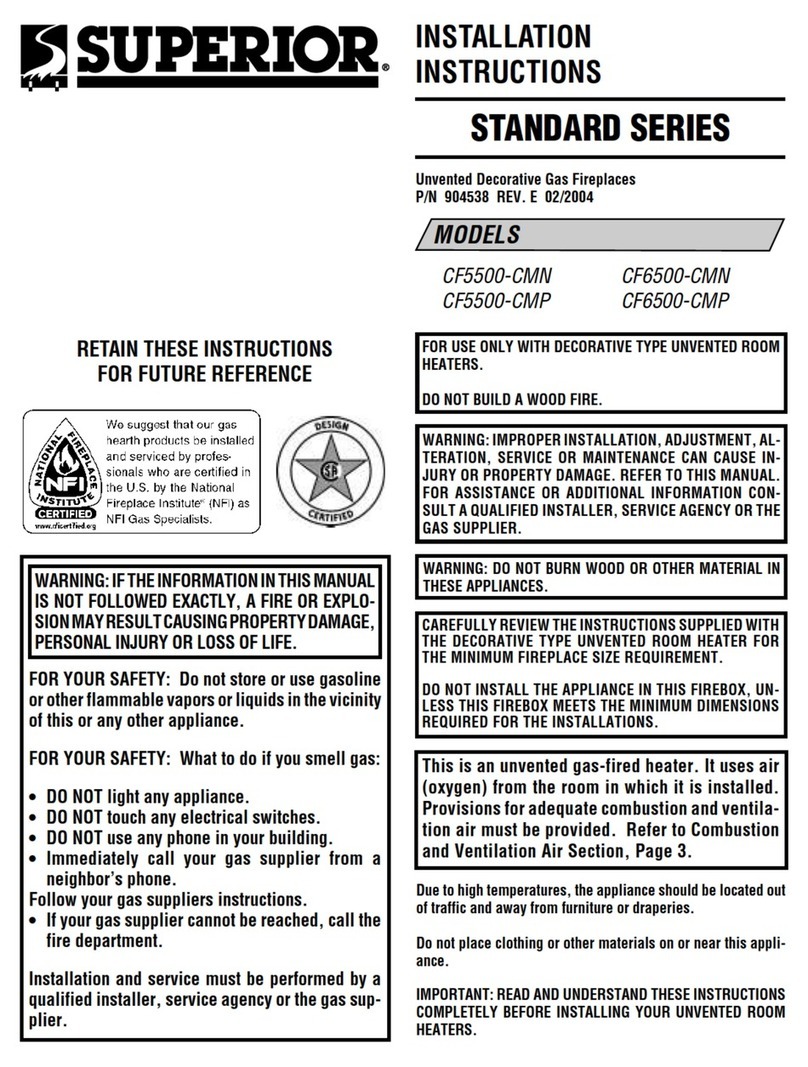
Superior
Superior Standart Series installation instructions

Amantii
Amantii FS-26-922 Assembly, installation and operation instructions
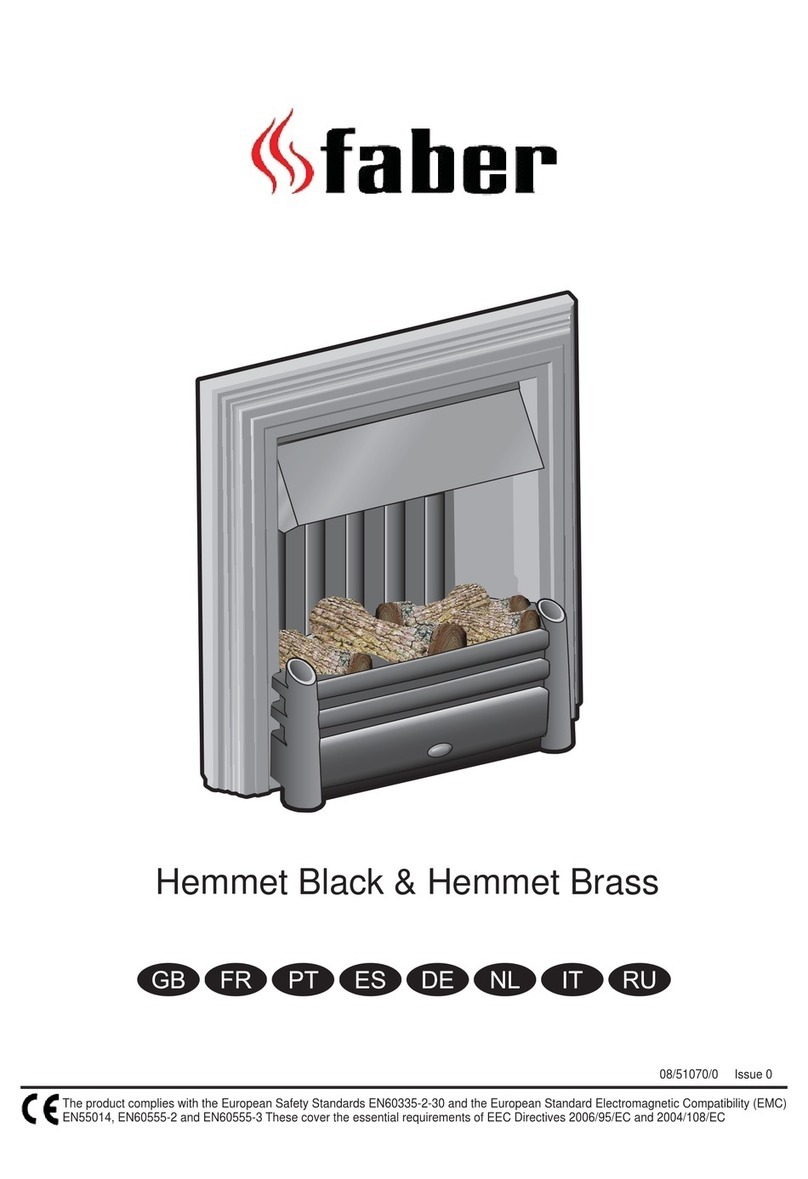
Faber
Faber Hemmet Brass manual
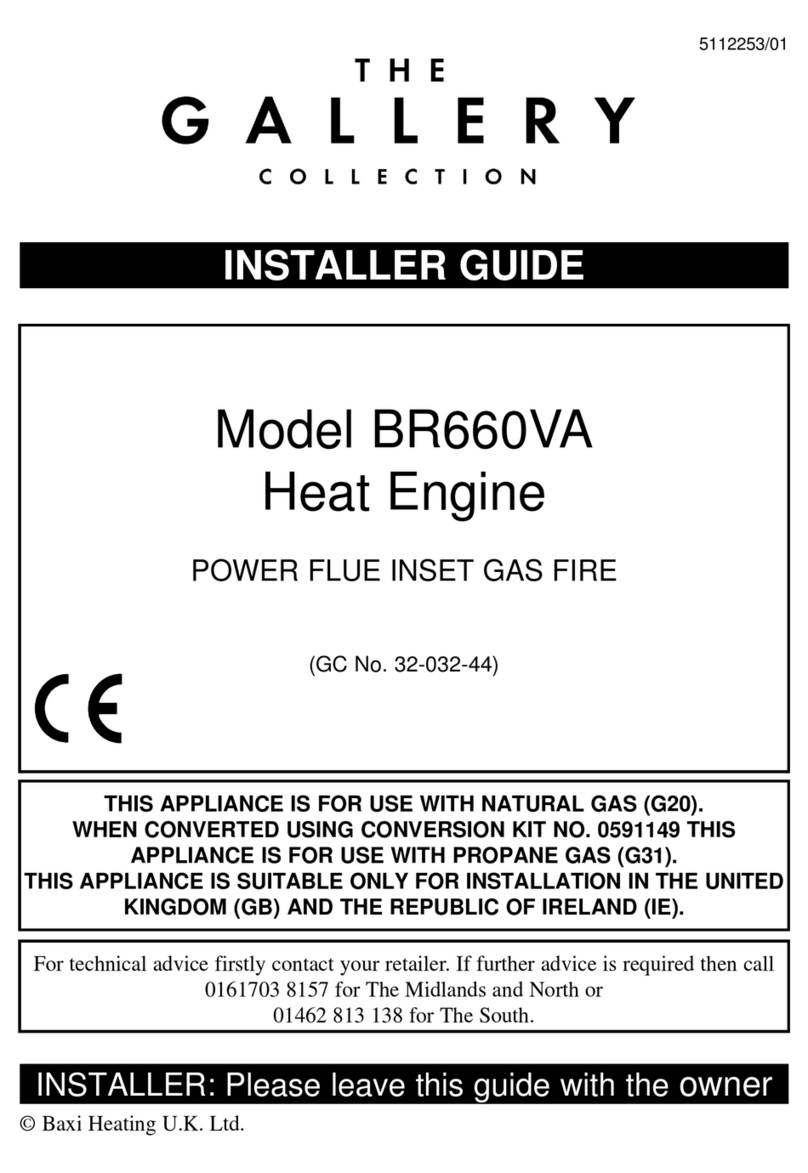
Baxi
Baxi Gallery Series Installer's guide
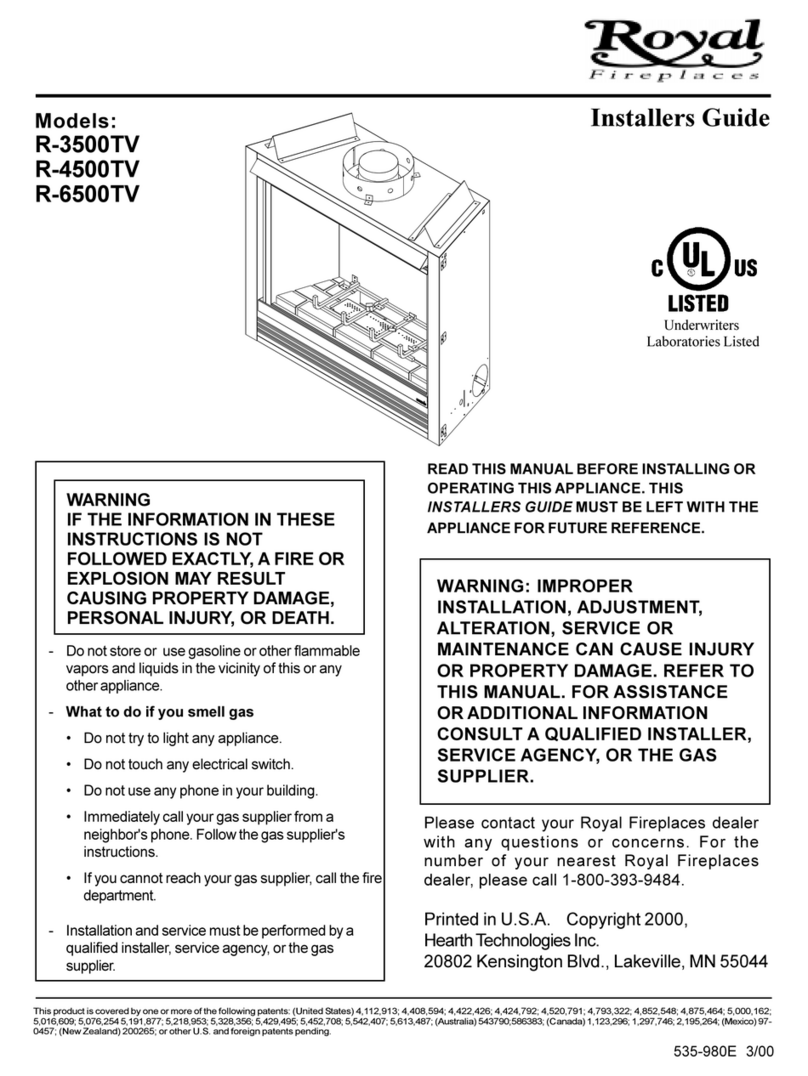
Royal
Royal R-3500TV Installer's guide
